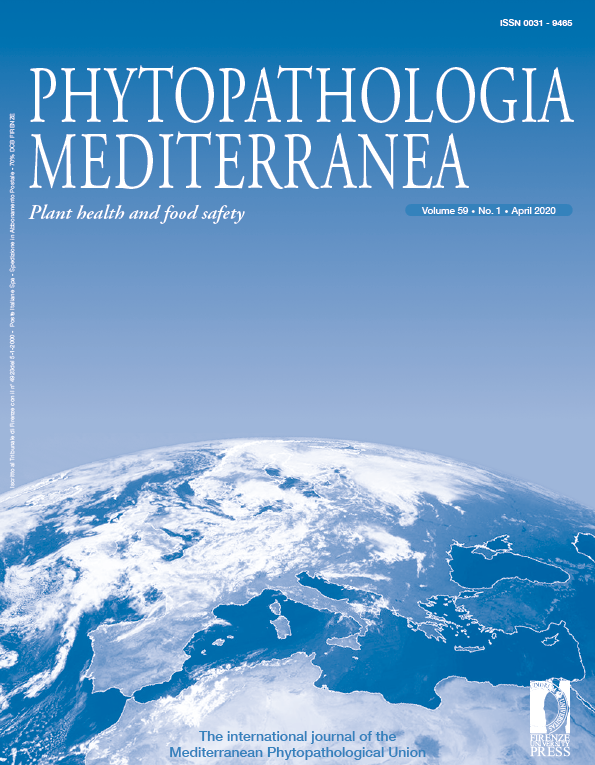Molecular and pathogenic characterization of Cochliobolus anamorphs associated with common root rot of wheat in Azerbaijan
Published 2020-03-14
Keywords
- ISSR,
- iPBS,
- phylogeny,
- aggressiveness
How to Cite
Abstract
Genetic variation among the Azerbaijani isolates of anamorphs of Cochliobolus spp., the causal agents of common root rot of wheat, was evaluated using pathogenicity assessments, sequence analyses of the internal transcribed spacer (ITS) region and glyceraldehyde-3-phosphate dehydrogenase (GPDH) gene, as well as inter-simple sequence repeat (ISSR) and inter-primer binding site (iPBS) markers. Twenty-eight isolates used in this study were obtained from diseased wheat plants in cereal growing regions of Azerbaijan in 2017. Bipolaris sorokiniana, Curvularia spicifera, and Curvularia inaequalis were identified. Bipolaris sorokiniana isolates were the most virulent on wheat seedlings, followed by isolates of C. spicifera and C. inaequalis. Phylogenetic analyses of a combined dataset of the ITS and GPDH regions grouped the isolates into three clusters, each of which contained isolates of one species. The dendrogram derived from the unweighted pair-grouped method by arithmetic average (UPGMA) cluster analyses based on the data of ISSR and iPBS markers divided the isolates into three clusters in concordance to their taxonomic grouping at species level, but without correlation to their geographic origins. Population structure of isolates was estimated based on Bayesian modelling, and this showed three populations (K = 3) supporting the separation of isolates in the dendrogram with the greatest mean value of Ln likelihood (-893,8). Utilization of the markers either separately or together produced a high level of polymorphism at interspecies level, which allowed for the separation of species. Although both marker systems had similar discrimination power to reveal genetic differences among the species, ISSR markers were more informative for eliciting intraspecies polymorphisms within B. sorokiniana and C. spicifera isolates. This is the first study on genetic diversity and population structure of anamorphic stages of Cochliobolus associated with common root rot of wheat using iPBS markers.






